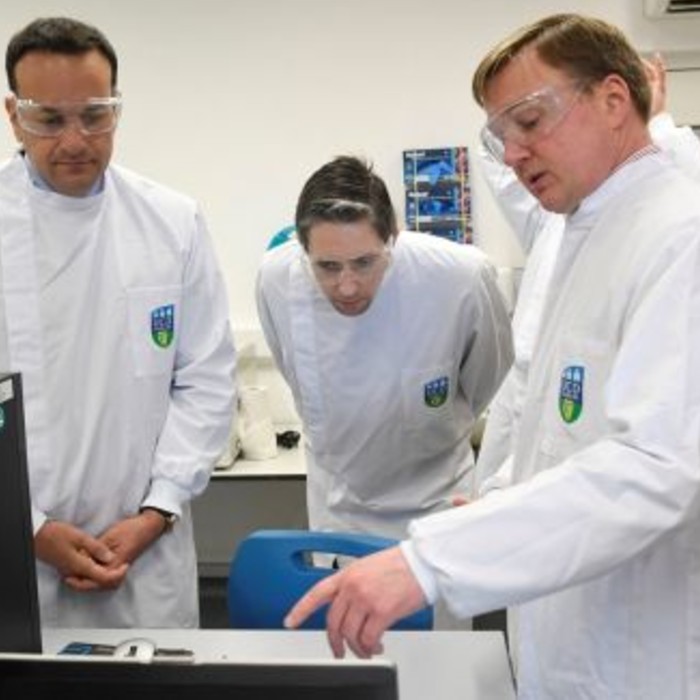Irish Epidemiological Modelling Advisory Group to NPHET
The Irish Epidemiological Modelling Advisory Group (IEMAG) provides advice and forecast models to the National Public Health Emergency Team (NPHET). UCD’s Professor Brendan Murphy sits on this advisory group, supported by Professor Nial Friel and Associate Professor Claire Gormley who are also from UCD School of Mathematics and Statistics.
Professor Murphy and his colleagues are involved in developing mathematical and statistical models for the each stage of the Covid-19 pandemic in conjunction with other mathematical researchers in Ireland and with assistance from other modelling groups around the world. These models can be used to plan healthcare demand and investigate the impact of mitigation measures on the epidemic.
The work of Professor Simon More and Mr Guy McGrath from UCD School of Veterinary Medicine impact directly on the work of UCD members of the IEMAG committee, drawing on experience from epidemiological modelling in the sphere of animal health.
In The Irish Times in June, Emeritus Professor of UCD School of Mathematics and Statistics, Professor Peter Lynch wrote about the role of this multidisciplinary group: "Among the most important scientific tools used for guidance on the Covid-19 outbreak are mathematical models. A model is a set of mathematical equations that can simulate physical, social or biological systems. Mathematical models provide valuable guidance for decision-makers and allow us to measure changes, understand observations and predict future behaviour.
"The Irish Epidemiological Modelling Advisory Group (IEMAG), established in March, provides statistical and mathematical modelling support and advice to the Chief Medical Officer and the National Public Health Emergency Team...and gathers data and monitors the characteristics of Covid-19 in Ireland and internationally. It develops mathematical and statistical models to forecast the evolution of the outbreak, gauges the effect of public health interventions in advance and evaluates probable scenarios for numbers of new cases over time.
"Responses and interventions are informed by modelling expertise, as well as by public health advice and experience from international guidance and evidence. Data from outbreaks already seen in other countries are used to calibrate and tune the models and guide decisions."
Among the models used by IEMAG to answer vital questions about the pandemic, a central one is a population-based SEIR model (which divides the population into groups that are susceptible (S), exposed (E), infectious (I) or recovered (R). The number of people in each group changes over time and is governed by a set of differential equations.
Professor Peter Lynch wrote: "In the IEMAG model, the infectious group is further divided into six subgroups depending on the path of the infection. Thus, there are nine coupled equations which must be solved together on a computer. The interactions between groups depend on about a dozen factors known as parameters, for example, the incubation period, rate of transmission, fraction of cases that self-quarantine and so on."
Numerous Parameters
Professor Lynch continued:"The results depend sensitively on these parameters. A subcommittee of IEMAG was established to examine the numerous parameters and to determine the most probable values under varying conditions.
"To allow for uncertainty, the model is run for a range of parameter values, giving a probable distribution of predicted values. This is reminiscent of ensemble prediction for weather forecasting. However, people are more fickle than parcels of air: while human behaviour does not much influence the weather, it has major consequences for the evolution of an infectious outbreak. Thus, the precision of pandemic modelling lies somewhere between weather prediction (good) and economic forecasting (poor).
"As a result of interventions, there has been a very significant suppression of Covid-19 spread in Ireland. The figure, using data up to May 16th, clearly shows the impact of interventions on the reproduction number. There were marked drops on March 13th to 14th, when schools and universities closed, and March 28th, when the major lockdown started. The reproduction rate of the virus, the R-number, has remained below 1 since then.
"The number of deaths per day has been greatly reduced following mitigating steps. However, if measures are relaxed too soon, an R-number above 1 could cause a dangerous peak in infections. If it were allowed to go above 2, the much more extreme consequences would be difficult to cope with.
"Irish people have generally observed Government restrictions to contain the pandemic. It is clear that interventions have greatly reduced the impact of the virus. Without these restrictions, we would be dealing with a catastrophe."
Professor Lynch concluded by pointing out the significance of a multi/interdisciplinary approach to addressing the Covid-19 crisis: "IEMAG’s work shows the benefits of combining expertise from diverse fields in which different approaches complement and reinforce each other. The modelling work is a wonderful example of blending the techniques of applied mathematics and statistics, worthy of recognition by the Irish public. It is really refreshing that the Irish authorities are listening with respect to the scientific experts. Let us hope this continues."
Read the full article by Professor Peter Lynch on The Irish Times website.
For some available datasets, see this website's section on Resources.


